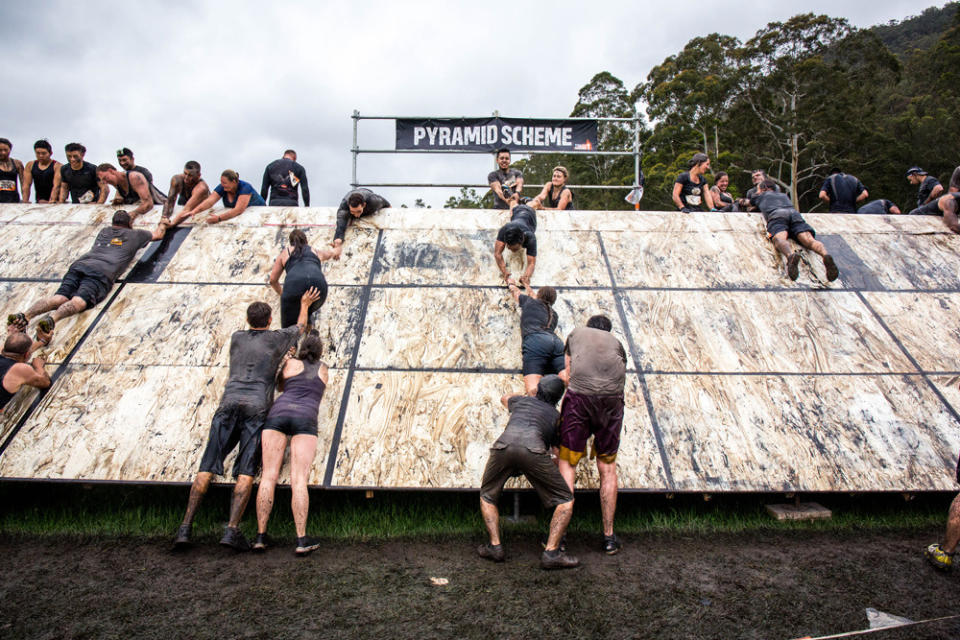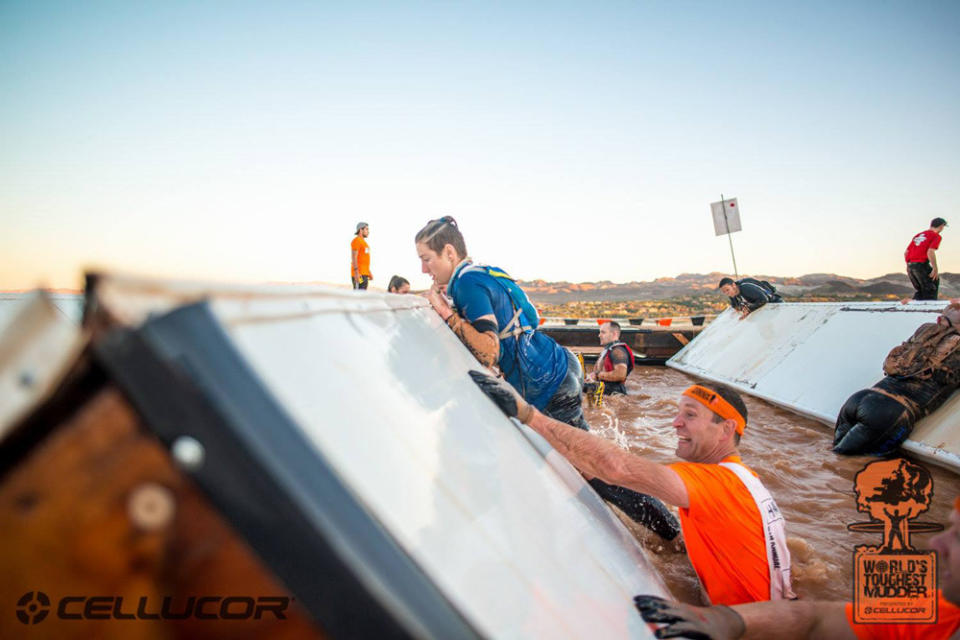The Obstacles That Were Too Intense for the Tough Mudder
Extreme obstacle courses, mud runs, and the like are only increasing in popularity (surpassing both marathons and half-marathons combined, according to data from Running USA). But hearing about your friend’s latest extreme obstacle course race, you may be seriously questioning if what she’s explaining is safe (or legal?).
Yes, it’s true that some obstacles in their early, baby stages — as in, before humans even reach the point where they test them out — are unsafe, but there’s a whole process in vetting and deciding which ones ultimately make the cut, and which creative-on-paper ideas get scrapped.
Take Tough Mudder, for instance. The teamwork-focused courses are 10 to 12 miles long and packed with at least 20 obstacles (the course varies a bit by location). You don’t have to be an elite athlete to complete one, but the brand provides training tips and schedules so you can make sure you’re in good enough shape to make it through. The first step in creating a Tough Mudder obstacle is called “ideation,” during which “we hold brainstorms and solicit crazy obstacle ideas from across the company,” Nolan Kombol, senior director of obstacle innovation, tells Yahoo Health. Everyone throws out ideas, no matter how out-of-the-box, and then they weed which ones are actually plausible and can continue to be developed.
Related: The Star Wars Workout: Yes, It Exists (And It’s Pretty Awesome)
Kombol shares one that was too crazy to even move on from brainstorming: “When we tested different ideas for an obstacle that could induce as much fear and mental grit as Electroshock Therapy [the infamous obstacle where you sprint through live wires and yes, get electrocuted], one of the ideas that made it pretty far in the brainstorming phase was a crawl under a clear glass box covered with common phobias, like snakes, spiders, scorpions, etc.,” Kombol says. “Great idea, but after some initial research we wisely decided not to move that idea into the testing phase…”
Once an idea gets fleshed out with sketches and blueprints, the team tests the prototype with a small group of people, which they call “alpha testing.” The next step is beta testing, where the obstacle is brought to select Tough Mudder events. “This gives us an opportunity to observe obstacle performance, review safety, and gauge participant satisfaction,” Kombol says.

“Pyramid Scheme,” a classic obstacle, is getting a reboot for the upcoming year. (Photo: Tough Mudder)
After alpha testing, some ideas get the boot if they just don’t translate, or pose a safety risk. “Safety is our No. 1 priority throughout the obstacle innovation process and on-site at events, so that’s the biggest factor in determining which obstacles we bring to Tough Mudder events,” Kombol adds.
Related: 5 Things That Happen When You Stop Working Out
“Slippery When Wet” and “Revolving Door” were two obstacles that the company decided to eliminate after the first round of tests. “Slippery When Wet” involved climbing up a slanted surface greased with vegetable oil. “But you can see in the video that it was actually too slippery to work the way we had hoped,” Kombol explains. “Revolving Door” involved participants rotating heavy, weighted logs attached to a cable, which simultaneously lifted a massive weight into the air and dropped it. Awesome in theory (and in practice), says Kombol, but also very complex and required a ton of physical strength. “People definitely enjoyed working together, but for a variety of reasons it didn’t make the final cut.”
Experts and engineers are involved in determining if obstacles are safe and ready to go to on-site testing. But the obstacle innovation team also relies on consumer feedback. Participants are emailed a post-event survey, and the team uses this data to determine what’s working and what isn’t.

”Block Ness,” one of Tough Mudder’s new obstacles launching 2016. (Photo: Tough Mudder)
Tough Mudder will be launching some new obstacles for 2016 nationwide: The “Block Ness Monster,” where team members hoist each other over a series of rotating blocks while waist-deep in water; “Frequent Flyers’ Club,” an option for returning racers (called Legionnaires) to skip the final “Electroshock Therapy” and instead take a leaping jump onto a crash pad from 15 feet above; “Pyramid Scheme,” a re-engineered classic that requires participants to build a human pyramid to help each other ladder up and over the top of a structure; and “Flying Squirrel,“ which involves jumping onto a trampoline, grabbing a zip line from above, and swinging to the finish line. (The “Flying Squirrel” is a new finisher obstacle for participants of the Tough Mudder Half, a five-mile course with some signature Tough Mudder obstacles, such as Everest and Mud Mile, but without some of the more daunting ones that involve electricity, fire, or ice.)
Related: What 12 Experienced Marathoners Wish They Knew During Their First Race

“Frequent Fliers’ Club.” (Photo: Tough Mudder)
While Tough Mudder regularly gets feedback from racers who want the course to be harder, Kombol vows that safety comes before anything else, and they’ll never rush the innovation process to compromise it. Too challenging also isn’t always more satisfying, either.
“People want to be challenged, but obstacles that are impossible simply aren’t as fun,” Kombol explains. “The truly hard thing to do is to put on an event that is the perfect balance between challenging AND rewarding.” And if participants are having fun at the same time, that’s the true recipe for sweaty, muddy success.
Read This Next: The 70 Worst Drinks That Will Give You a “Soda Belly”
Let’s keep in touch! Follow Yahoo Health on Facebook, Twitter, Instagram, and Pinterest.

